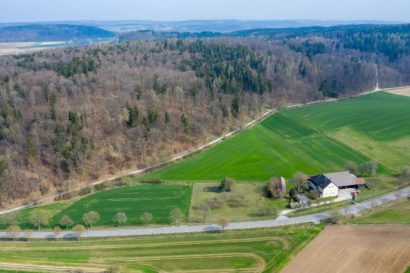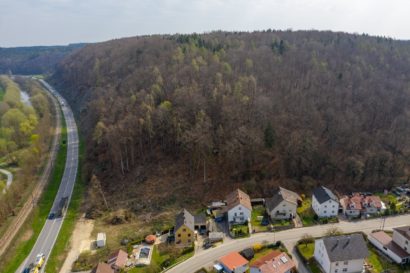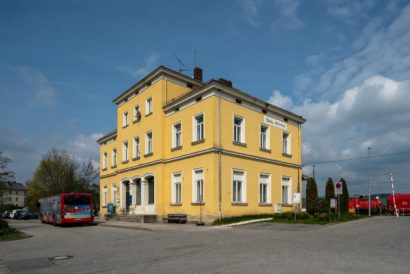Saal a. d. Donau Subcamp
November 30, 1944 – April 20, 1945
Codenames: "Me-Ringberg", "Ring", "Ring-Me"
![]()
Aerial view of the former camp grounds on the Ringberg in Saal a.d. Donau, 2019 (Flossenbürg Concentration Camp Memorial / Photo: Rainer Viertlböck)
![]()
Aerial view of the Ringberg in Saal a.d. Donau, 2019 (Flossenbürg Concentration Camp Memorial / Photo Rainer Viertlböck). At the edge of the forest was the tunnel entrance.
![]()
Saal a.d. Donau Train Station, 2019 (Flossenbürg Concentration Camp Memorial / Photo: Rainer Viertlböck)
-
Prisoners
In total over 740 men. Among them 180 non-Jewish and 60 Jewish Poles, over 160 Czechs, over 140 Russians, 70 Italians, 50 each French and Belgian, 30 each German- and Hungarian-Jews, along with people from seven other nations. The highest prisoner number: 671 (End of February 1945).
-
Forced labor and quarters
In Ringberg bei Saal the prisoners had to construct tunnels for an underground aircraft factory of the Messerschmitt-Werke Regensburg. They had to also build roads and unload ships, as well as carry out leveling work.
-
At first, the men were quartered in tunnels. Later they were moved to a fenced-in barrack compound 1.5 kilometers from the tunnel entrances. The working conditions, accommodation, food rations, and hygiene facilities were catastrophic. The men were forced to eat grass; many suffered from typhus.
-
Guards
Detail leader Konrad Maier and initially 30, later 73, SS guards (March 1945).
-
Death toll
At least 236 men died in Saal. At the very end, 16 men died during the disbanding of the camp as the SS set fire to the sickbay barrack.
-
Disbanding of the camp / end of the war
Around April 20, 1945, a death march arrived in Saal from Hersbruck. 400 sick prisoners remained behind in Saal. The other prisoners were transported in open wagons to the concentration camp Dachau. On the way they received no rations. Only 154 reached Dachau alive.
-
Commemoration
Since 2016, six information panels memorialize the subcamp. There is a memorial stone in the Saal Cemetery.


